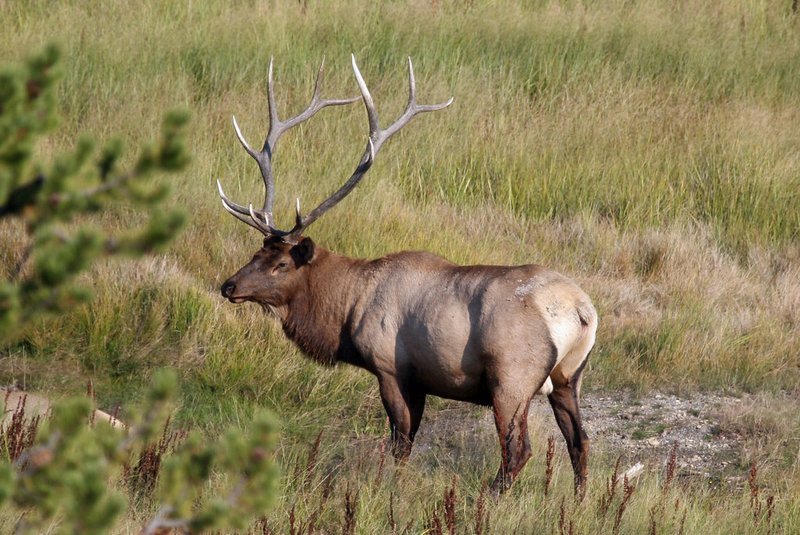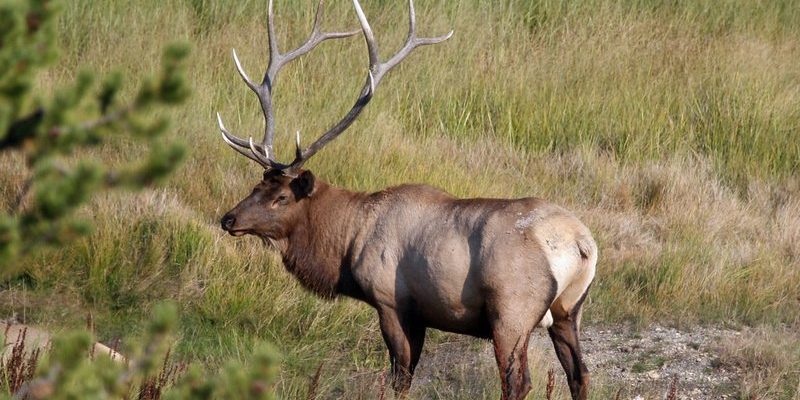
Wapitis are more than just large deer; they’re masters of adaptation. Just like humans learn to find shelter and food in tough times, wapitis utilize their natural instincts and physical characteristics to navigate their environments. From their impressive antlers to their social behaviors, every aspect of the wapiti plays a role in their survival story. So, how exactly do they manage to stay resilient in such harsh climates? Let’s explore the secrets behind their incredible survival skills.
Physical Adaptations and Features
Wapitis are designed for survival. One of their key features is their impressive size. Males can weigh up to 1,100 pounds, and their large bodies are not just for show. This bulk helps them retain heat during bitter winters. Imagine wrapping yourself in a heavy blanket; that’s how wapitis keep warm in freezing temperatures.
Their thick, insulating fur acts like a natural coat, providing protection from both cold and wet conditions. This fur is seasonal, too—it changes with the climate. In winter, it’s denser and longer to combat the cold, while in summer, it becomes lighter and helps keep them cool. Isn’t it incredible how nature works?
Another fascinating feature is their long legs. Wapitis can easily traverse hilly or mountainous terrains, which is crucial for finding food. They utilize their strong limbs to migrate to areas with more accessible vegetation during the colder months. When food is scarce, these animals can travel up to 20 miles a day in search of better grazing options.
Finding Food in Tough Conditions
Surviving in harsh environments means food can be hard to find. Wapitis are grazers, and they primarily feed on grasses, leaves, and shrubs. In winter, when snow covers these food sources, they’ve adapted by using their hooves to dig through the snow. It’s like using a shovel to uncover buried treasure—the treasure here being the tender grasses hidden beneath.
Their digestive systems also play a part in their survival. Wapitis are ruminants, which means they have a special stomach that helps break down tough plant material. They can efficiently extract nutrients from food that would otherwise be difficult to digest, allowing them to thrive even in less than ideal conditions.
You might be wondering how they manage to find food when it’s scarce. They often stick together in groups, which not only increases safety from predators but also makes it easier to locate food. Working as a team, they can better explore their surroundings and share information about food sources.
Social Behavior and Group Dynamics
Wapitis are social creatures. Living in herds helps them survive, especially in harsh conditions. There’s safety in numbers; when a predator approaches, there’s a better chance of spotting it early if the group is together. But there’s more to their social structure than just protection.
During the mating season, or rut, male wapitis use their impressive antlers to establish dominance and attract females. They’ll engage in dramatic displays, including bugling—loud, high-pitched calls that echo through the wilderness. It’s their way of saying, “Look at me! I’m strong and healthy!”
In the winter, herds often split into smaller groups. This helps them reduce competition for food while still providing social benefits. It’s a clever strategy that allows them to adapt to changing conditions. Even in smaller groups, they maintain communication through vocalizations and body language, ensuring that everyone is aware of their surroundings.
Migration Patterns
Migration is one of the key survival strategies of wapitis. Many herds travel seasonally between summer and winter ranges, covering long distances to access the best food sources. This movement is vital, especially when food becomes scarce during the winter months.
These migrations are not random; they are learned behaviors passed down from older generations. Young wapitis watch their mothers and other herd members to learn the best routes and times to travel. It’s like attending a family reunion where everyone shares knowledge about where the best picnic spots are!
Migration also provides wapitis with the opportunity to escape harsh weather conditions. During heavy snowfall, for example, they might move to lower elevations where it’s easier to find food. Their ability to adapt to changing environments is a testament to their resilience and intelligence.
Dealing with Predators
Surviving in the wild isn’t just about finding food; it’s also about staying safe from predators. Wapitis face threats from wolves, mountain lions, and bears, so they have developed several strategies to avoid becoming dinner.
One of the primary defense mechanisms is their sheer size and strength. A fully-grown male wapiti can be intimidating, and that often dissuades potential predators. But when intimidation isn’t enough, they rely on their speed and agility. In short bursts, wapitis can run up to 40 miles per hour! It’s like having a built-in escape route when things get dicey.
They also use their keen senses to stay alert. Wapitis have excellent eyesight and an acute sense of smell. They can detect dangers from a distance, which gives them a precious few extra seconds to react. It’s like having a built-in alarm system, helping them stay one step ahead of predators.
Impact of Climate Change
While wapitis are remarkably adaptable, even they aren’t immune to the effects of climate change. Rising temperatures, changing precipitation patterns, and habitat loss due to human activity pose significant threats to their survival.
As snowpacks diminish and vegetation patterns shift, their traditional migration routes and food sources may become less accessible. This forces wapitis to adapt more quickly than ever before, which can be challenging. It’s like trying to adjust to a new job with a steep learning curve; it takes time and resilience.
Conservation efforts are crucial to ensure these magnificent animals can continue to thrive. By preserving their habitats and protecting their migration routes, we can help wapitis adapt to the changing world around them. They are a vital part of the ecosystem, and their survival benefits not just them but the entire environment.
Wapitis are truly remarkable animals with incredible adaptability. They survive in harsh environments due to their physical features, social behavior, and strategic migration patterns. From their thick fur to their strong legs, every aspect helps them thrive against the odds.
As climate change continues to impact their habitats, understanding their survival strategies is more important than ever. By learning about wapitis, we gain insight into the resilience of wildlife and the importance of conservation. So, next time you see a wapiti in the wild, remember just how much they’ve adapted to survive and thrive in the face of challenges. They’re not just surviving; they’re thriving, and that’s a beautiful thing.

